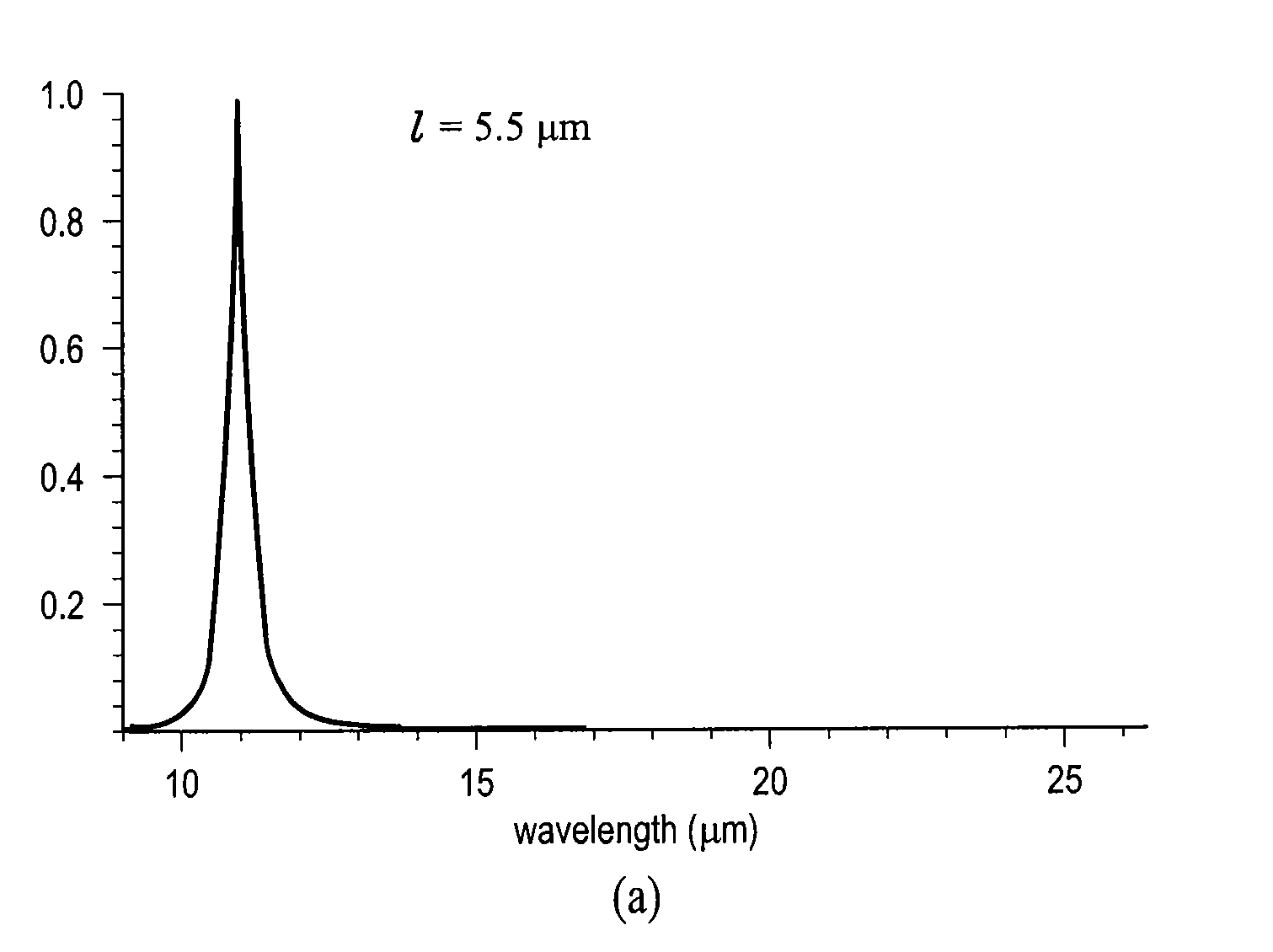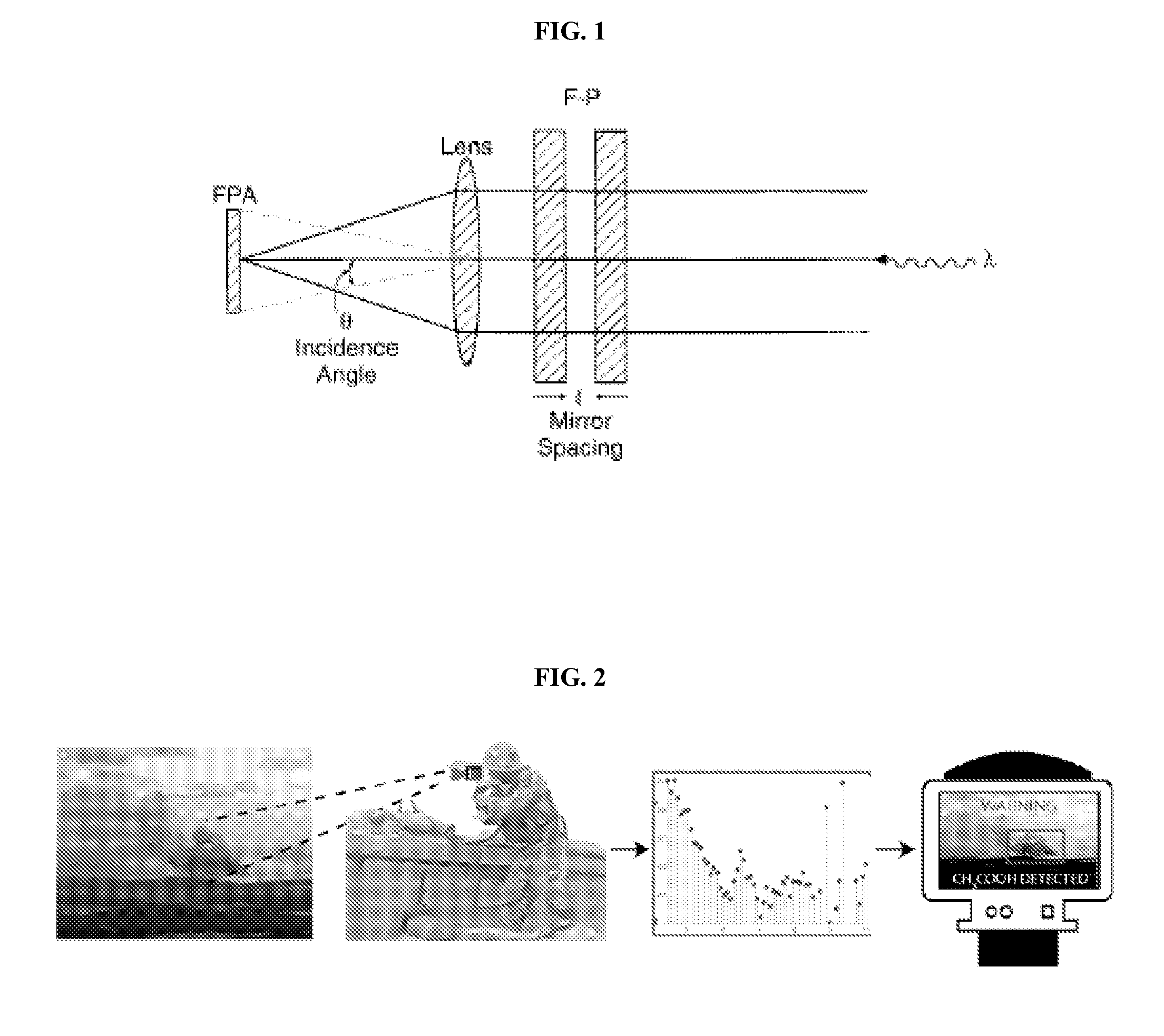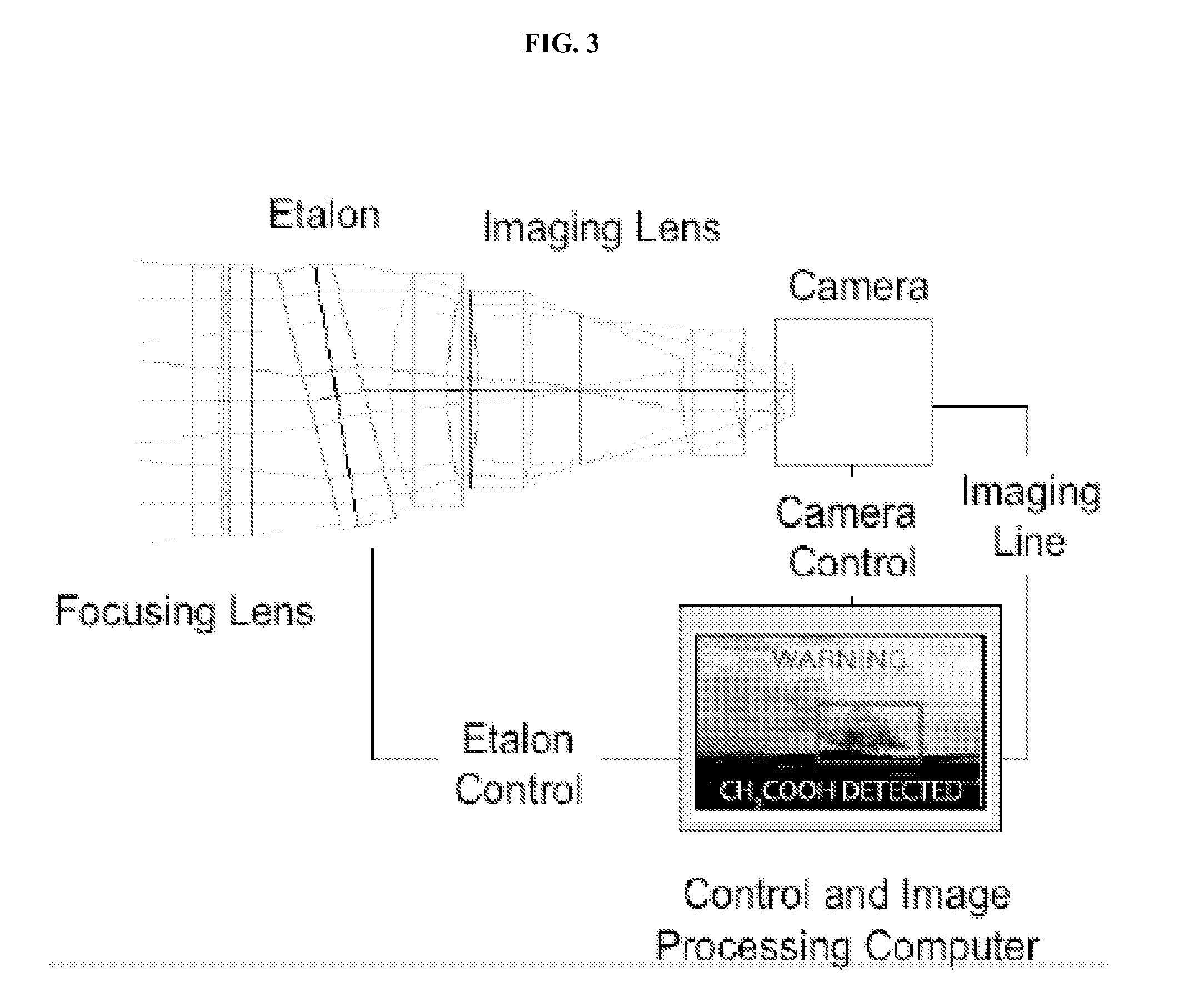Leak Detection and Identification System
a technology of leak detection and identification system, which is applied in the direction of instruments, spectrometry/spectrophotometry/monochromators, optical radiation measurement, etc., can solve the problems of light weight and ruggedness, and achieve the effect of improving sensitivity, light weight and less expens
- Summary
- Abstract
- Description
- Claims
- Application Information
AI Technical Summary
Benefits of technology
Problems solved by technology
Method used
Image
Examples
example 1
SHRE-IS
[0067]A conceptual drawing of the SRHE-IS is shown in FIG. 4. The system consists of a Fabry-Perot etalon, an imaging lens, a microbolometer camera, and a computer for spectral and image data post-processing. The proof-of-concept prototype to be built at the beginning of Phase II will use a separate computer for data processing, but future iterations of the design will move the processing to on-board processors within the camera. Our technical approach combines the commercial promise of new low-cost microbolometer cameras with an innovative method to extract super-resolution spectral data from a Fabry-Perot etalon. During the Phase I Option we will investigate existing algorithms for identifying and tagging IR signatures. The SRHE-IS will be lighter, cheaper, and more rugged than existing hyperspectral imaging systems.
[0068]Microbolometer Camera: Coming out of Honeywell in the mid 1980's, a microbolometer responds to thermal changes by producing a corresponding change in its ...
PUM
 Login to View More
Login to View More Abstract
Description
Claims
Application Information
 Login to View More
Login to View More - R&D
- Intellectual Property
- Life Sciences
- Materials
- Tech Scout
- Unparalleled Data Quality
- Higher Quality Content
- 60% Fewer Hallucinations
Browse by: Latest US Patents, China's latest patents, Technical Efficacy Thesaurus, Application Domain, Technology Topic, Popular Technical Reports.
© 2025 PatSnap. All rights reserved.Legal|Privacy policy|Modern Slavery Act Transparency Statement|Sitemap|About US| Contact US: help@patsnap.com



